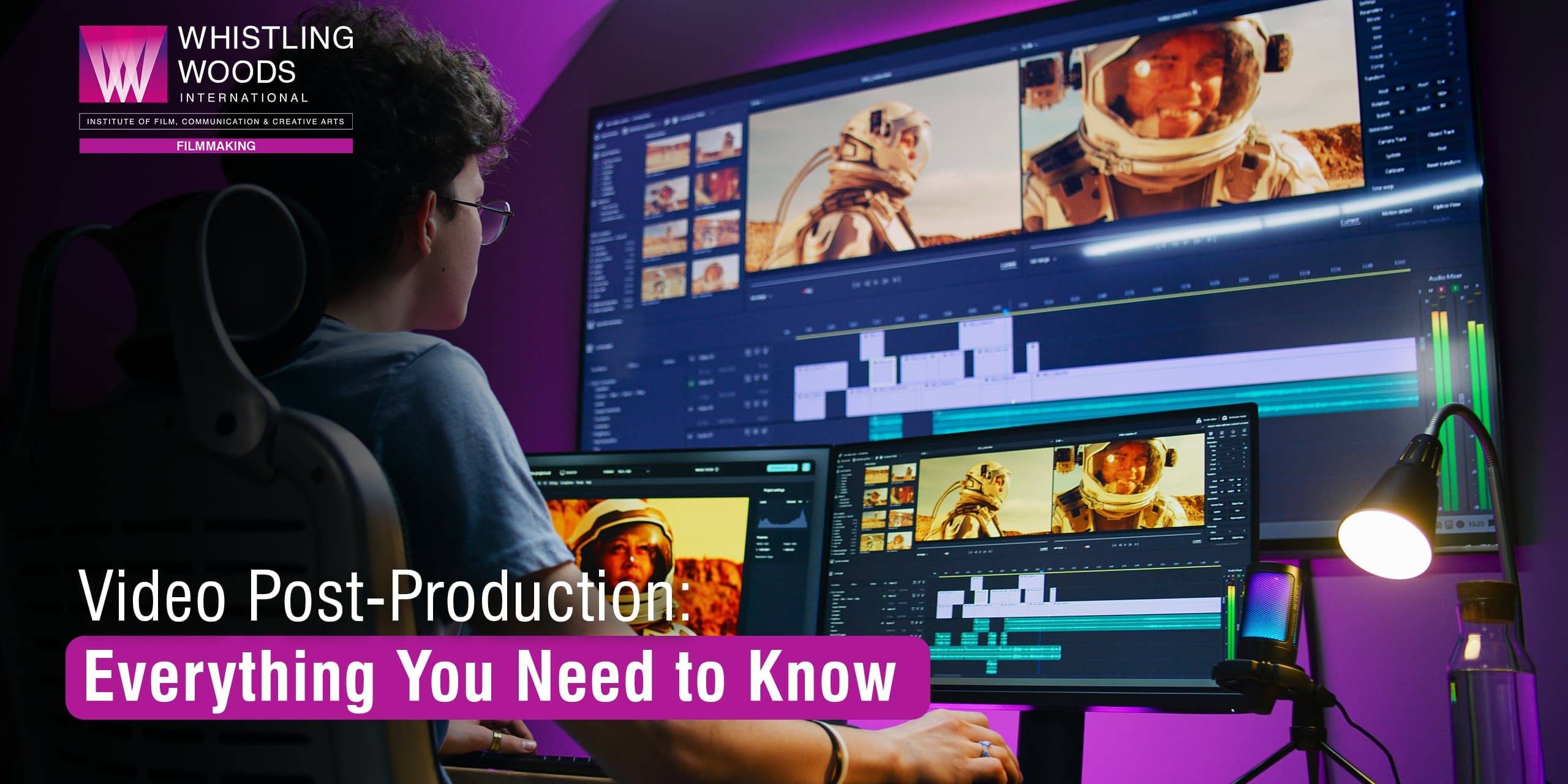What is video post-production?
Video post-production is a crucial phase in the filmmaking process. It’s where raw footage transforms into a polished final product. In other words, video post-production begins after the filming is complete.
It’s the stage where all the pieces come together. This involves editing, visual effects, sound design, and colour grading. This is when the editors, sound designers, and visual effects artists work their magic. They turn hours of raw footage into a cohesive story, and the process can take weeks or even months, depending on the project’s complexity.
For aspiring filmmakers, understanding post-production is essential. Let’s dive into the world of video post-production and explore its various aspects.
Key Steps in Video Post-Production
1. Video Editing
Video editing is the heart of post-production. Editors arrange clips to create a compelling narrative. They trim unnecessary footage and ensure smooth transitions. The goal is to maintain the viewer’s interest throughout the video. This is exactly why many filmmaking courses in Mumbai and across India focus heavily on editing techniques.
2. Colour Correction and Grading
Colour plays a vital role in setting the mood of a film. Colour correction fixes any inconsistencies in the footage. Colour grading then enhances the visual style. It can make a scene feel warm and inviting or cold and eerie. This skill is often taught in-depth at film schools as part of their filmmaking course.
3. Sound Design and Mixing
Sound is half the experience in film. Sound designers create and edit audio elements. This includes dialogue, sound effects, and ambient noise. They ensure that every sound enhances the viewing experience. Sound mixing balances all these elements perfectly.
4. Visual Effects (VFX)
Visual effects add elements that were impossible or impractical to film. This could be anything from a CGI monster to a subtle background replacement. VFX artists work closely with editors to integrate these effects seamlessly. Advanced VFX courses are often part of comprehensive film courses.
5. Adding Titles and Graphics
Titles and graphics provide important information to viewers. They can also enhance the visual appeal of the video. Designers create opening credits, lower thirds, and end credits. These elements complement the overall style of the film.
Essential Tools for Video Post-Production
To excel in post-production, you need the right tools. Here is some essential software used in the industry:
1. Video Editing Software
Popular choices include Adobe Premiere Pro, Final Cut Pro X, and DaVinci Resolve. These offer a wide range of editing capabilities. Most filmmaking courses in Mumbai and other cities teach these industry-standard tools.
2. Colour Grading Software
DaVinci Resolve is widely used for colour grading. Some editors also use Adobe After Effects for this purpose. Learning colour grading is a crucial part of many film courses.
3. Audio Editing Software
For sound design, professionals often use Adobe Audition or Pro Tools. These provide precise control over audio elements. Sound editing, therefore, is an important module in most filmmaking courses.
4. Visual Effects Software
Adobe After Effects and Autodesk Maya are popular for creating visual effects. These powerful tools allow artists to bring imagination to life on screen.
The Importance of Post-Production
Post-production can make or break a film. It’s where the director’s vision truly comes to life. Good post-production can elevate mediocre footage. Poor post-production can ruin great footage. That’s why so much emphasis is placed on this stage of filmmaking.
Post-production also allows for creative problem-solving. Sometimes, issues from the filming stage can be fixed in post-production. For example, unwanted objects can be removed from shots, and audio problems can often be corrected. This flexibility makes post-production an exciting and crucial phase of filmmaking.
Career Opportunities in Post-Production
The skills learnt in post-production are highly valuable in the film industry. Editors, colourists, and VFX artists are always in demand. These roles offer creative and technical challenges. They also provide opportunities to work on diverse projects. From feature films to web series, the possibilities are endless.
Many who start in post-production go on to become directors or producers. The knowledge gained in this phase provides a solid foundation for overall filmmaking. This is why many filmmaking courses include extensive training in post-production techniques.
Conclusion
Video post-production is a fascinating and essential part of filmmaking. It’s where the magic happens, turning raw footage into captivating stories. Whether you’re interested in editing, sound design, or visual effects, there’s a place for you in post-production. With dedication and the right training, you could be part of bringing incredible stories to life on screen.
Master the art of post-production through filmmaking courses offered by Whistling Woods International, a distinguished film school in Mumbai, India. Gain deep insights from our team of industry-recognised experts and leading figures in the domain, helping you master the craft of visual storytelling.
Remember, the world of post-production is always evolving. New technologies and techniques emerge regularly. Stay curious and keep learning. Whether through formal film courses or self-study, continuous improvement is key. The skills you develop in post-production will serve you well throughout your filmmaking career.

